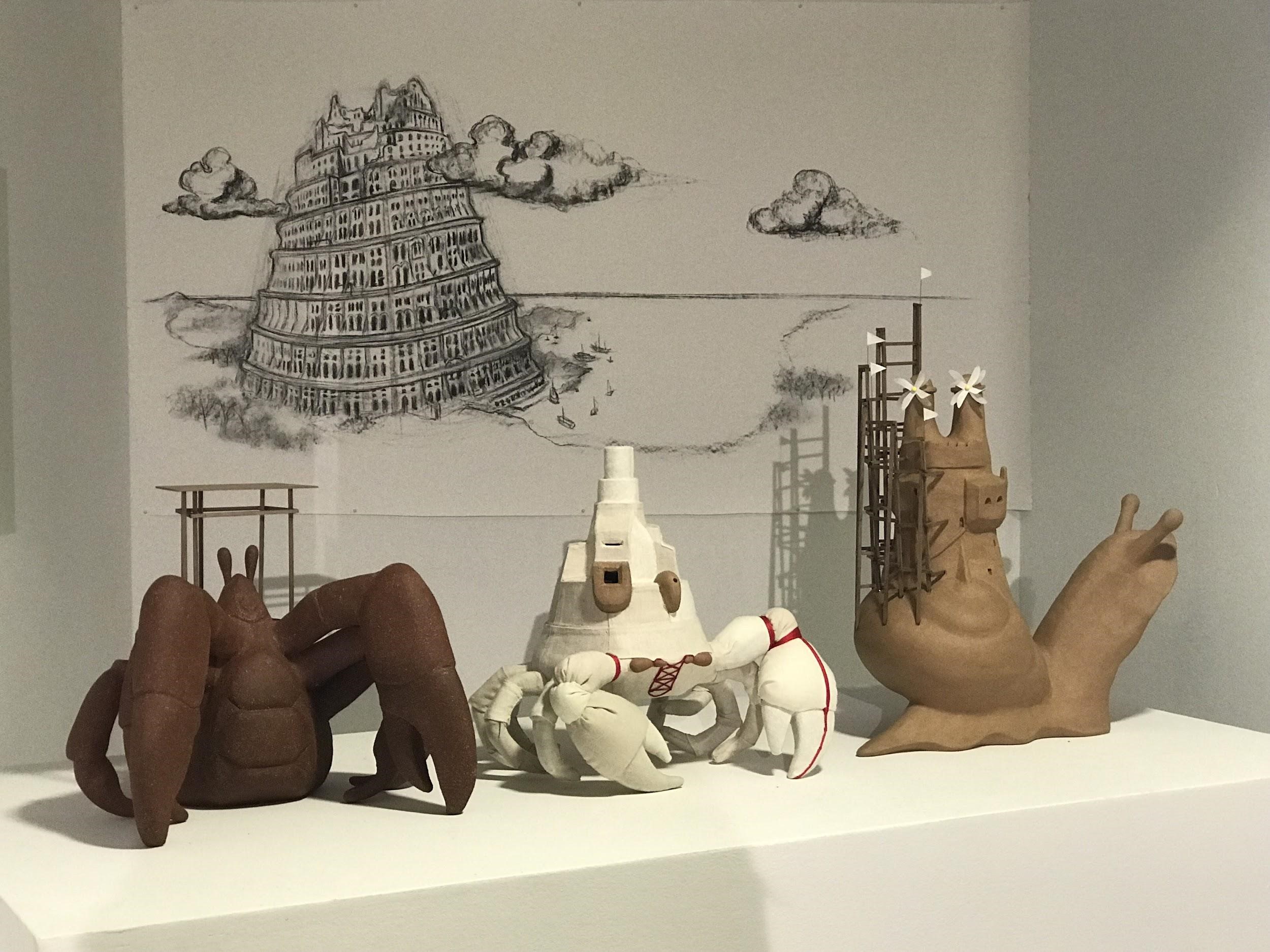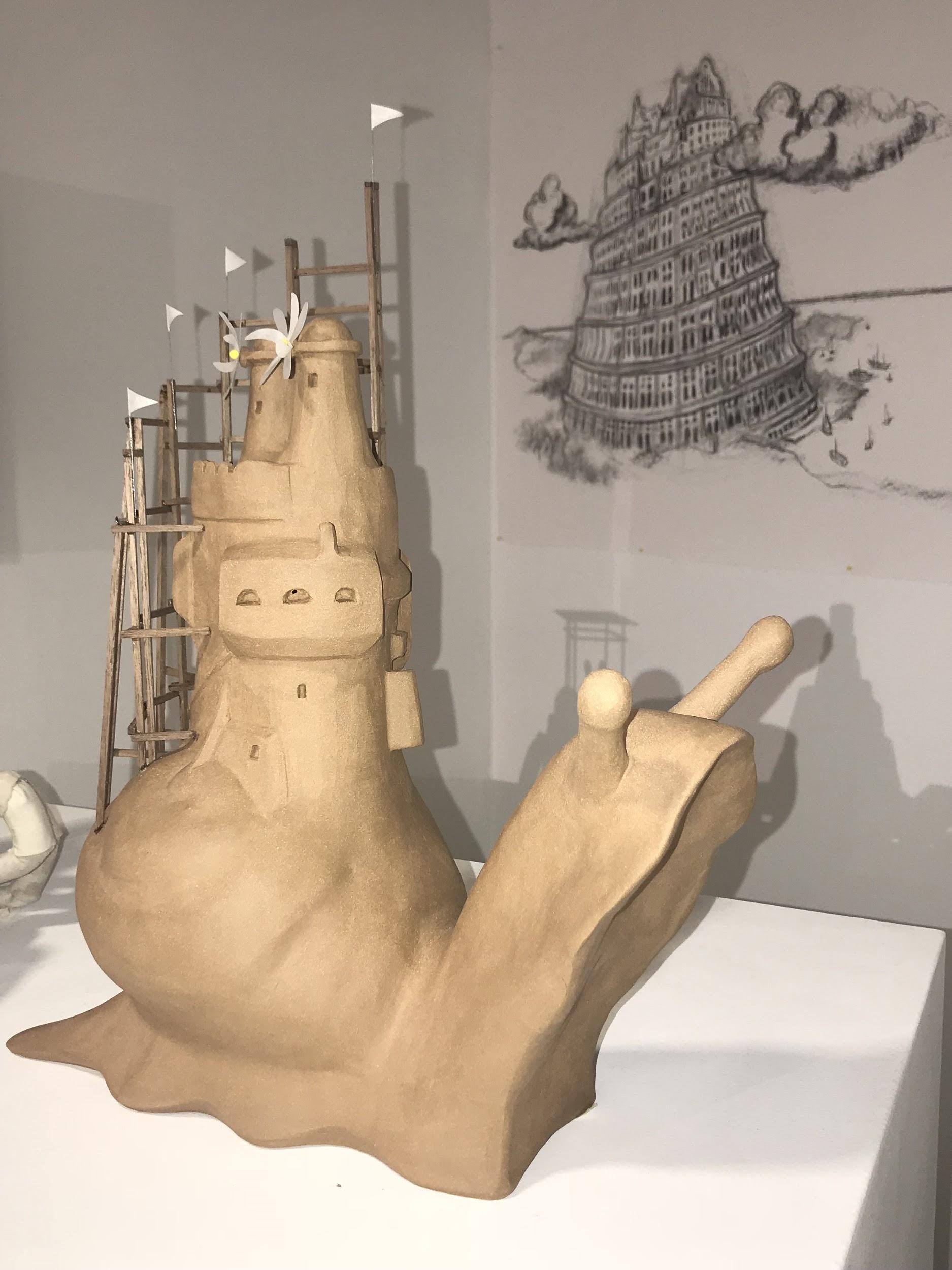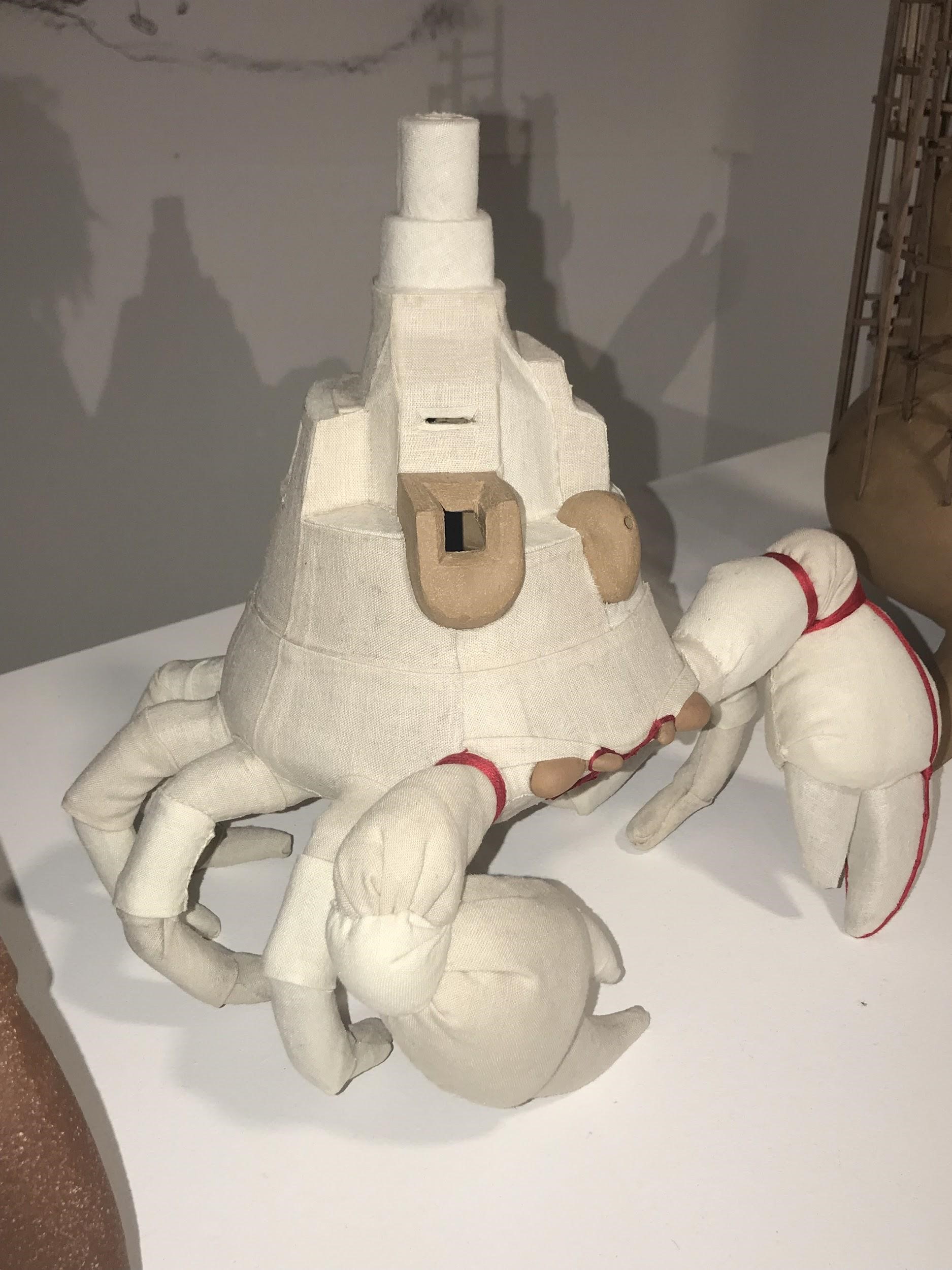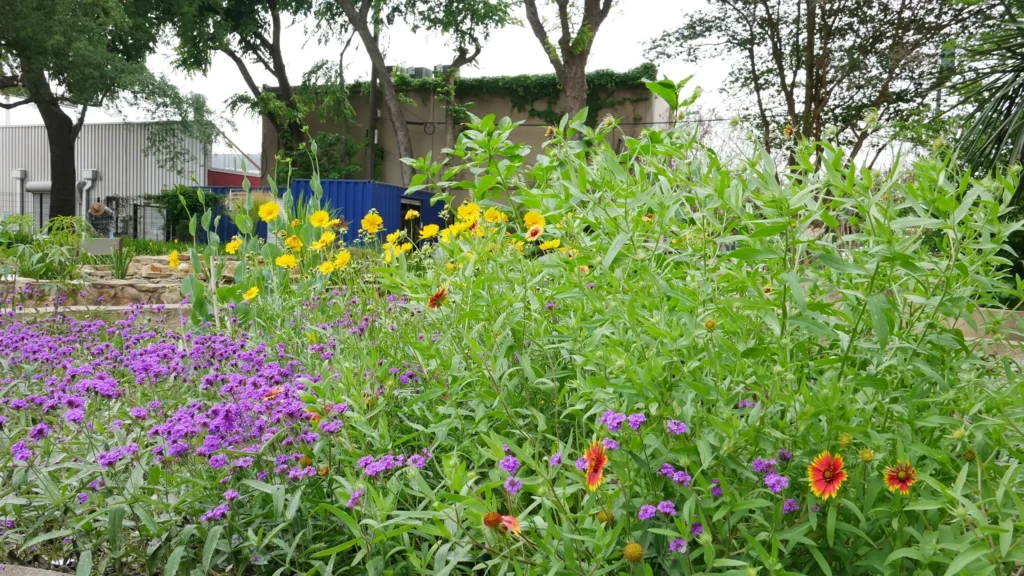
Hiromi Iyoda is an artist who works primarily with ceramics. She began studying ceramics at Saddleback Community College in Mission Viejo, California then received her BFA from California State University of Long Beach and her MFA from University of Nebraska-Lincoln. Growing up in Japan, much of Hiromi’s work is inspired by stories of her childhood. The characters of her “ceramic circus” relate not only to the real life characters of Hiromi’s life, but also resemble popular Japanese cartoons. While she was in residence at Houston Center for Contemporary Craft, Hiromi evolved her artistic style in many ways, experimenting with different color combinations and introducing fibers in her ceramic sculptures. This summer, HCCC Curatorial Intern Cydney Pickens had the chance to ask Hiromi a few questions about her artworks and the inspiration behind them.

Cydney Pickens: Of all the cartoons and movies that are paramount to Japanese culture, in the past, you have attributed the manga film, Akira (1989), as an important influence in your work. Could you elaborate on how this film connects to you personally as well as how it has influenced your work?
Hiromi Iyoda: I know when you see movies like Akira (1989) and Roujin Z (1991), there is not an obvious connection to my work, visually or conceptually. But I like the animation in the movie, specifically this scene where the main character was devoured and consumed by a heap of mechanical debris. I find those movies visually intriguing, and they have affected me psychologically. I see the mechanical debris as a metaphor for our past traumas and experiences, which can sometimes take control over our present life. We are a reflection of what we have experienced, and how we perceive past experiences can change who we are now.
I choose to create insects because of their strength and ability to adjust to new environments. The shell of a crustacean, like a crab or snail, acts as a form of armor in a new environment. Like shells, our scars harden us over the years, serving as a protective barrier. Whether physical or metaphorical, we carry with us reminders of our lived experiences. This can be actual objects that we carry when we move or the memories and mental baggage that we carry with us. Sometimes we don’t always realize how these experiences affect us.

CP: Japanese cartoons and movies are often filled with colorful scenes and vibrant imagery. Your works are often more monochromatic. How do you decide when and how much color to use? Does color enhance or distract?
HI: I don’t dream in color most of the time so I remember events mainly by reflecting on my feelings. Feelings can be hard for me to describe through color because I have resolved those feelings over the years and now remember the event differently. By accepting what happened, the understanding of the event is changed, because I have altered my memory to cope with the pain as a way to preserve my peace of mind. I believe that the baggage that we carry through our lives, both good and bad experiences, become tangled up in our minds.
My work is mostly monochromatic, and I add some color to draw attention to subtle details. I guess I do this because I’m trying to show how each of my creatures carries a mass of unknown experiences. It is not just the feelings attached to one memory that is important, but it is the combination of past and current feelings that affects each creature. While it may not be clear how each component interacts or what its function is, the mechanical components on top of my creatures serve as a metaphor for all of the different experiences and traumas of the past.
CP: Would you say the characters in your works are all part of one extended narrative? Or do some of the characters represent the same person/feeling/event in your life?
HI: I model each of the characters I make after my own experiences. I have moved around a lot to seek new opportunities, so I try not to get too attached to my new surroundings. I see my work as autobiographical. I see these experiences as relatable to anyone who seeks better opportunities for themselves, for people who move around a lot, and/or immigrants living in another country. As my story continues to grow, I aim to create even more complicated structures on the backs of my creatures and increase the size of the figures altogether. These new sculptures reflect how, as we age, we continue to carry more baggage until we get to a point where we can let go of the feelings that we bear from difficult experiences.

CP: Having experimented with new mediums other than clay during your residency at HCCC, which materials are most comfortable to work with, and how do you decide whether or not to incorporate materials other than clay?
HI: I decided to humor myself by experimenting with new materials, and, until recently, I considered myself strictly a clay person. I value clay as an archival material, so I was like, “Clay, clay, clay, and only clay!” Clay pretty much does everything that I want it to. But, in the end, if you don’t take care of it, nothing is archival, including clay. I started by introducing paper because it is easily accessible, and using it took away my fear to try out something new by making additional components for my sculptures. By using paper materials, I was able to add more visible stress and physical baggage to my creatures to express the burdens that have affected the lives of these animals. At one point, I considered making additional clay pieces rather than paper components, but clay is heavy, and the additional weight could cause the sculptures to be imbalanced, making it more difficult for them to stand.
Clay also has a tendency to shrink once it dries. So, in a sense, paper does give me a certain freedom; however, now I’m also incorporating found objects. This means that I am always keeping an eye out for the perfect materials to use in my sculptures while considering the color of the paper, and the structure, and how it will fit together with the clay and paper. Otherwise, I can also make everything on my own from clay or paper.
CP: How has your time at the Craft Center helped evolve your work, and what are you working on next?
HI: While this is my fourth artist residency , this is the first time I’ve focused on mixed media rather than ceramics only.. I am so glad for the opportunity to experiment with different materials during my residency. There are many artists that I have worked with before and continue to stay in touch with today that have inspired this approach. I will take what I have learned at HCCC and keep exploring the possibilities of working with paper and clay.

